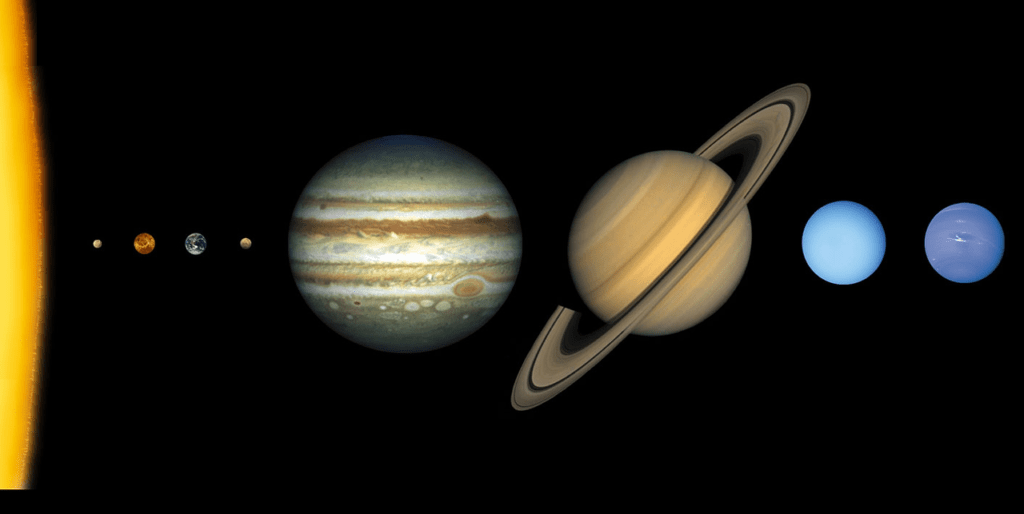This post will show a way to calculate the diameters and radii of the planets. These values can be determined when the planet is aligned with the Sun and the Earth. Then, knowing the time period of the planet’s orbit around the Sun and measuring the angular width of the planet by an observer on the Earth the approximate diameter of the planet can be computed. Here we assume the planet’s orbit about the Sun is circular.
The following need to be measured:
ϴ = Angular width of the planet when aligned with the Sun and the Earth (see link below to the NASA Fact Sheets)
The following need to be obtained from elsewhere:
d = Distance of a planet from the Earth = Sun-planet distance minus Sun-Earth distance (Both gotten from solutions to one of my previous science posts)
The following will be calculated:
D = Diameter of the planet


Calculate the diameters and radii of the planets:
Since the width of the planet is a very tiny fraction of the circumference of its orbit about the Sun, we can state that D has the same value as the arc subtended by the angle ϴ. Then, since we are assuming the planet is in a circular orbit about the Sun:
D = d * ϴ where ϴ is in radians
But since ϴ is in degrees, we need to convert it to radians. Therefore:
D = d * ϴ * (2π / 360)
Radius = D/2
The angular width of each planet has been measured by astronomers using highly accurate advanced telescopes. (Other methods such as those using measurements of the transits of the planet’s moons were used by astronomers to corroborate the results.) The angular widths and the Sun-planet distances are:

* These values are the maximum arc widths as seen from the Earth (the arc widths are maximum when the Sun, Earth, and planet are aligned). The NASA reference uses the term “Mean value at inferior conjunction with the Earth” and “Mean value at opposition from the Earth”.
Calculating the radius of each planet using these values we get:

Sources of error:
The sources of error in this approximation are the uncertainty in the values for the arc width as seen from the Earth (deg), and the inaccuracies in the Sun-planet distances that were computed in one my previous science posts. (Recall that the Sun-planet distances computed in that science post were off by nearly 10%.)
It is not clear from the NASA Fact Sheets whether the mean apparent angular diameters of the planets were adjusted so that they represent angles “measured” from the center of the Earth. If they were measured from the surface of the Earth, then a slight error would be introduced into each calculation of the radius of a planet.
The modern values for the radius of each planet (excluding the Earth, obviously) were computed from the above equations but using the modern values for Sun-planet distance (how these values were gotten is described at the end of one of my previous science posts).
Source for the modern values:
The modern values are from the NASA Fact Sheets, located at:
https://nssdc.gsfc.nasa.gov/planetary/factsheet/
The notes on the NASA Fact Sheets state the following:
“Note that the values listed on the fact sheets are not “official” values, there is no single set of agreed upon values. They are based on ongoing research and as such are under study and subject to change at any time.
Every effort has been made to present the most up-to-date information, but care should be exercised when using these values.”


Hey there, I think your website might be having browser compatibility issues. When I look at your blog site in Firefox, it looks fine but when opening in Internet Explorer, it has some overlapping. I just wanted to give you a quick heads up! Other then that, awesome blog!
https://shorturl.fm/uoW0f
https://shorturl.fm/OZqGd